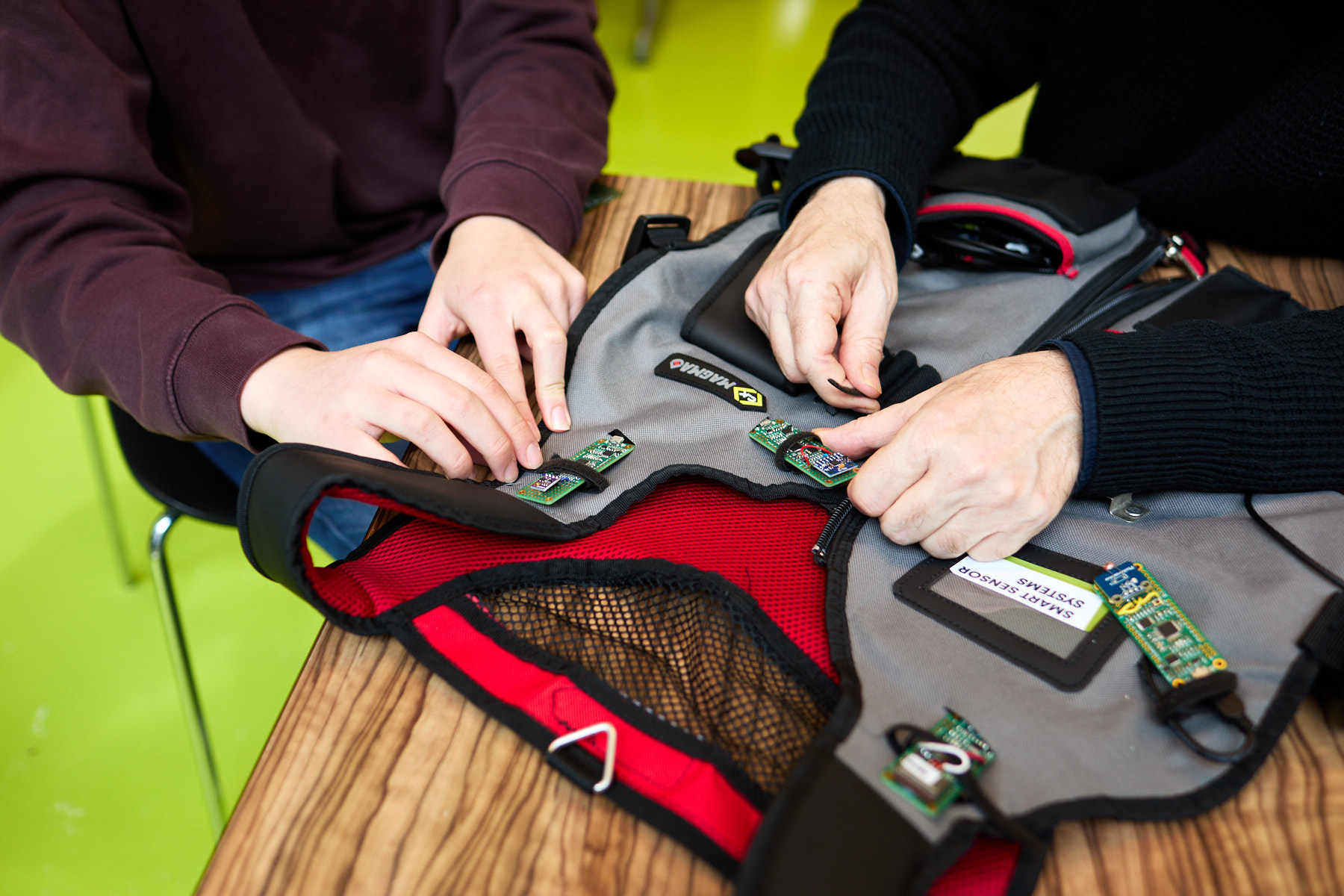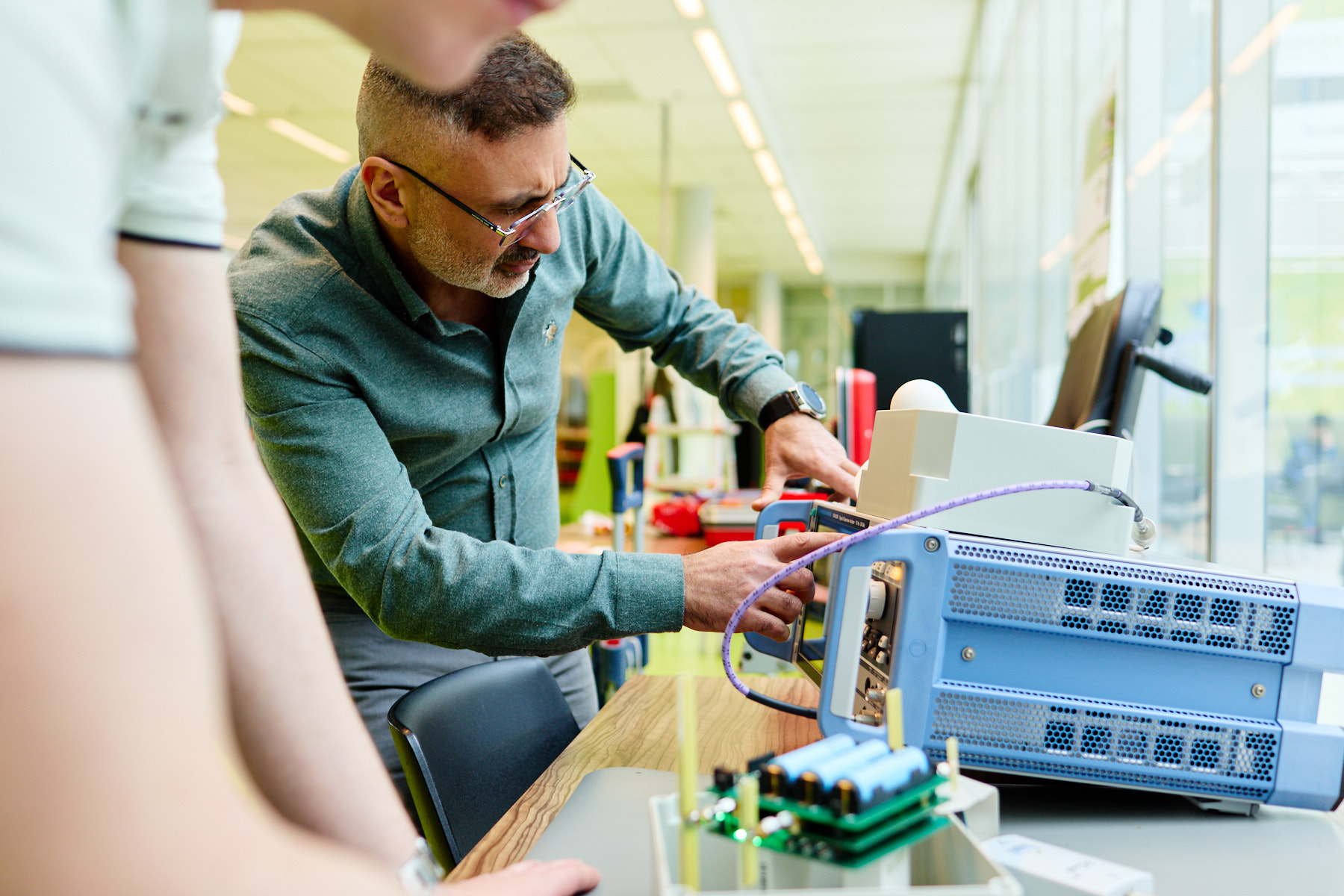It’s important to know the impact of every new generation wireless communication technology on the environment. This also applies to the fifth generation: 5G. Throughout Europe, various studies are being conducted into exposure to electromagnetic fields (EMF) in new 5G networks. TU Delft, among others, is collaborating with the Haagse Hoogeschool (The Hague University of Applied Sciences) and Ghent University on a number of these studies.
Within the team at the Haagse Hoogeschool, Sam Aerts is a connecting link: “I worked at Ghent University until the end of 2022 and then transferred to the Haagse Hogeschool, to the Smart Sensor Systems lectorate. Back then in Ghent we were already working on 5G measurements and building sensors to perform long-term measurements. Here in Delft, TU Delft and Haagse Hogeschool were also working on their own sensors. It seemed ideal to compare our work. If we put all our measuring instruments together, will we see the same results? Or will there be differences? And can we explain those differences? What environmental factors affect our measurements?”
Uncertainties
Measuring electromagnetic fields is a very delicate matter. The sensors’ location is critical to the accuracy of the measurements. Sam explains: “We always deal with measurement uncertainties, because of varying signals in time and in space. That’s why we initially lined up five sensors adjacent to each other on a table and compared those values. Then we shifted them, to determine the influence of positioning. We also brought along a spectrum analyzer to perform very precise measurements. Sometimes the measurements turned out to be very divergent, because the sensors didn’t function as well as expected. That’s part of scientific research. Experimenting, making assumptions based on the results, verifying them through additional testing, and finally drawing conclusions.”
Some of the sensors that were tested at that time have now been installed at The Green Village, near Do IoT Fieldlab’s 5G installation. TU Delft colleagues Joep van der Weijden and Marijn Leeuwenberg were involved in setting up this research from the very start. After an initial inventory on the test specifications, supplies and possible risks, they drew up an agreement together. Joep: “The Green Village is a low-regulation environment. You don’t have to obtain all kinds of permits if you want to perform research. Beforehand, we want to define who is responsible for which equipment, when it is installed on our premises. We also had to determine together how and where to store the data. Together with our partner Surf, we created a configuration in which the EMV-sensors send a data package across the internet every 5 seconds. Data collection and analysis is up to the researcher. At The Green Village we want to facilitate in the best possible way. While researching partners can easily access the data themselves, they can also make use of our dashboard. Whichever is more convenient.”

Accessible data
The Green Village dashboard displays all kinds of data from the many scientific experiments conducted at the site. This also includes the data from the research on 5G. Marijn: “If it weren’t for this platform, they would have had to develop it themselves. That consumes a lot of time, because you first have to contemplate the information architecture and what exactly you want to visualise. We were now able to easily expand our platform. Consequently, we are helping scientists to have a smooth launch. The prerequisite is that all data is accessible; including to other researchers who might want to use it. In addition to setting up the dashboard, we also advised on the most optimal location of the sensors. For example, if you position two sensors close together on the interior and exterior of a facade, you can extract specific information.” Combined with the knowledge of the 5G experts working together within Do IoT Fieldlab, a kind of grid was conceived. For the Haagse Hogeschool, it is essential that the fields be disturbed as little as possible. “Even a difference of a mere 10 centimeters can be significant. We wanted to minimise reflections from buildings as much as possible, for the most stable field and optimal measurement.”
Every new generation of communications technology increases in efficiency. In practice, this means that an antenna should not emit radiation if not requested by a user. The research team’s expectations corresponded fairly well with the results. “We first calibrated the sensors in the lab,” Sam outlines, “because they only measure along one axis. But you have to measure in three dimensions to cover the overall field. Therefore, we determine the average response from the calibration measurements and add an additional factor based on the spectrum analyser measurement we perform afterwards, on site. This factor is needed to account for the influence of the sensor node placement. “In the next phase, we want to perform several more tests in which we very specifically cause a peak in data usage and therefore in the fields we generate. This will allow us to determine whether our sensors have sufficient dynamic range to measure these fields. However, such a peak hardly ever occurs, because in a real life network multiple users share the data – and the radiation coupled with it. But it is important to check what the possible maximum field strengths are. You shouldn’t think much of that, by the way,” Sam nuances, “we remain very well below the maximum values set by the EU for safe use of 5G.”
Vest full of sensors
The next step will be to develop a “wearable” for use in 5G networks, which will allow someone to measure fields while walking from A to B. Most people associate the word wearable with a smartwatch, but a watch is not quite as appropriate, Sam explains. “For one thing, your arms are constantly moving. This disrupts a field so the readout varies tremendously. Wearing something on your torso is much more stable. A vest sits in a fixed position. Furthermore, one measurement spot is not sufficient, as the field in front of you can be very different from the one behind you. And this difference increases as higher frequencies are used. We are now working on a vest that is overall packed with sensors to be used in a 5G network at 26 GHz. A splendid project that combines the academic brainpower of TU Delft with the practical expertise that students at the Haagse Hogeschool are trained in.”
Thinking about the future, Sam is positive. The research will definitely be continued in the near future. Both TU Delft and the Haagse Hogeschool want to expand, improve and further develop the sensor network. A new Do IoT 5G installation was recently opened at Tomatoworld, an experimental environment in a greenhouse. “We keep looking for locations where we can gain even more knowledge about the range of 5G and the influence of the network on the environment, and by that we don’t just mean people, but also animals and plants. Very interesting to study what happens at such a specific location!”


